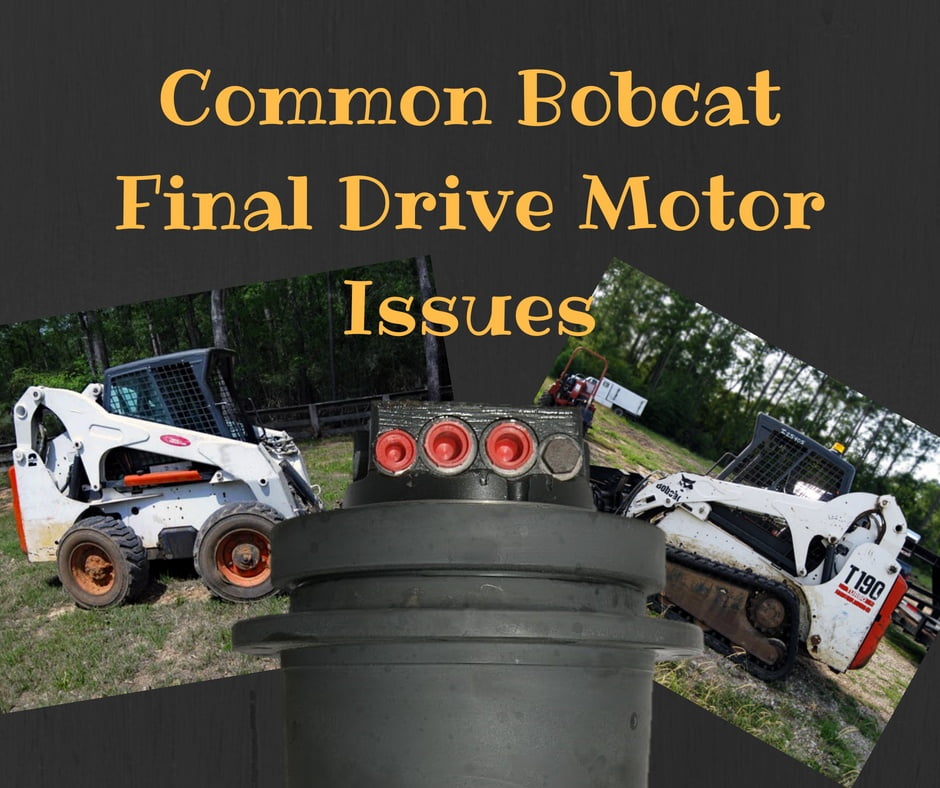If you’re a Bobcat owner, then you know that drive motor problems can be a real pain. Whether it’s your skid steer loader, excavator or other Bobcat equipment, a faulty drive motor can put a serious damper on your productivity. Here’s what you need to know about Bobcat drive motor problems and how to fix them.
If your Bobcat is having drive motor problems, there are a few things you can do to troubleshoot the issue. First, check the Bobcat’s fluids and make sure that the hydraulic fluid is full and at the correct level. Next, check the drive motor itself for any visible damage or leaks.
If everything looks okay with the motor, then checking the Bobcat’s electrical system is the next step. Make sure all of the connections are tight and that there are no loose wires. Finally, if you’re still having trouble, it’s best to consult with a Bobcat dealer or service center for further diagnosis and assistance.
Bobcat T190 Travel Motor Problems: Final Drive Diagnostic Testing
How Do You Test a Bobcat Drive Motor?
Before testing a Bobcat drive motor, it is important to ensure that the vehicle is in good working condition and that all safety precautions are taken. To test the drive motor, first connect a voltmeter to the positive and negative terminals of the battery. Next, start the engine and let it idle for two minutes.
Then, turn on the headlights and turn off all other accessories. With the headlights still on, rev the engine to around 2,000 RPM and hold it there for five seconds. Finally, check the voltmeter reading.
If it is between 13-14 volts, then the drive motor is functioning properly.
What Causes Final Drive Failure?
There are a few different things that can cause final drive failure. One of the most common causes is simply wear and tear. Over time, the gears in the final drive will start to wear down, causing them to slip and eventually fail.
Another common cause of final drive failure is contamination. If dirt or other debris gets into the gearbox, it can cause the gears to grind and eventually fail. Finally, if the bearings in the final drive are not properly lubricated, they can seize up and cause the drive to fail.
How Many Hours Do Bobcat Engines Last?
The average lifespan of a Bobcat engine is between 1,500 and 2,000 hours. However, with proper maintenance and care, some engines have been known to last much longer. The key to extending the life of your Bobcat engine is to perform regular maintenance and keep an eye on any potential problems.
If you catch a problem early, you can often fix it before it becomes serious enough to cause major damage.
How Long Do Bobcat Machines Last?
How long do Bobcat machines last? This is a difficult question to answer since it depends on a number of factors, including how well the machine is maintained and how often it is used. However, in general, a Bobcat machine can last anywhere from 10 to 20 years.

Credit: www.youtube.com
Bobcat Drive Motor Rebuild Kit
If you’re the owner of a Bobcat Skid Steer Loader, chances are you’ve had to replace the drive motor at some point. And if you have, you know that it’s not a cheap fix. But there is a way to save yourself some money by rebuilding the drive motor yourself with a Bobcat Drive Motor Rebuild Kit.
The kit comes with everything you need to rebuild the drive motor, including new bearings, seals and gaskets. Plus, it includes detailed instructions so even if you’re not a mechanic, you can do it yourself. It’s a fairly simple process and can be done in a few hours.
So if your Bobcat’s drive motor needs replaced, don’t spend the money on a new one. Save yourself some cash and rebuild it yourself with a Bobcat Drive Motor Rebuild Kit.
Conclusion
If you’re having problems with your Bobcat drive motor, there are a few things you can check. First, make sure the drive belt is tight and in good condition. If it’s loose or damaged, it could be causing the problem.Next, check the hydraulic fluid level and make sure it’s full.
If it’s low, that could be the issue. Finally, check the transmission oil level and make sure it’s full. If it’s low, that could be causing the problem as well.If none of these things fix the problem, then you may need to take your Bobcat to a mechanic for further diagnosis.
